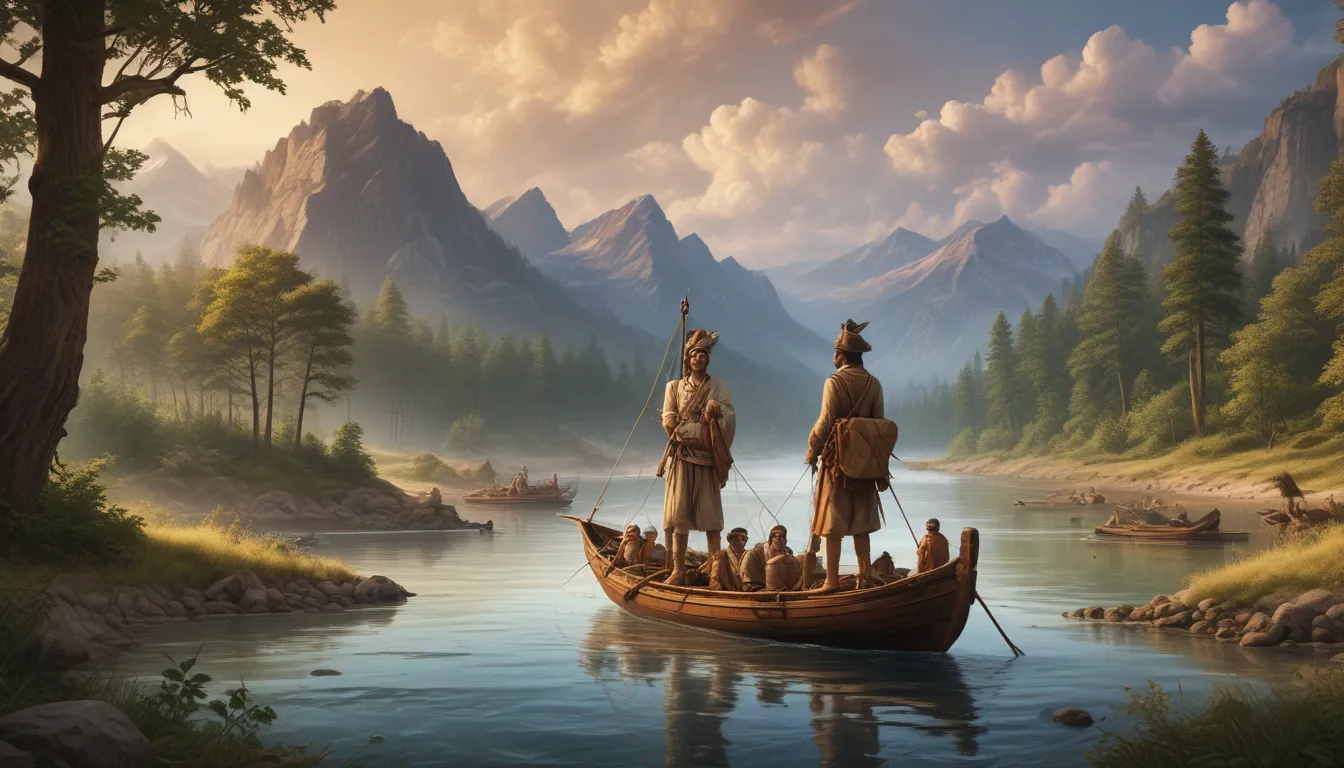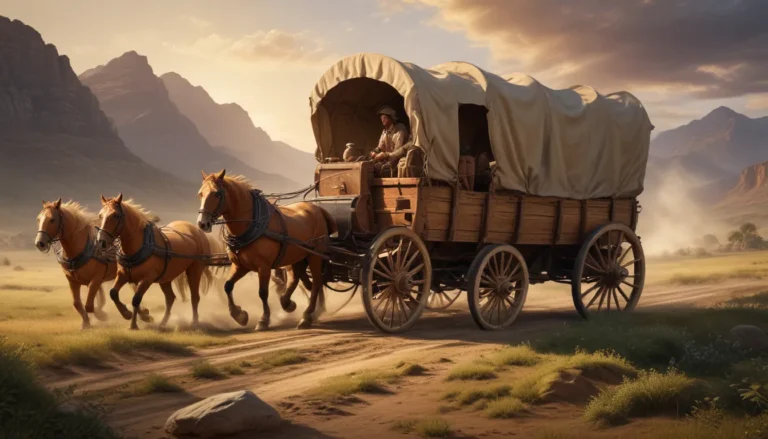The images in our articles may not match the content exactly. They are used to grab your attention, not to show the exact details in the text. The images complement the text but do not replace it.
Imagine embarking on a journey through the uncharted lands of early 19th-century America, where vast expanses of unknown territory stretched out before you. This was the reality for Meriwether Lewis and William Clark, two American explorers who led one of the most remarkable expeditions in history. Commissioned by President Thomas Jefferson, Lewis and Clark set out on a mission to explore the newly acquired western territory of the United States after the Louisiana Purchase in 1803. Their expedition, known as the Corps of Discovery, would not only map the unknown but also bring to light numerous fascinating facts about the land, its natural resources, and the diverse cultures of Native American tribes they encountered.
Who Were Lewis and Clark?
Meriwether Lewis, President Jefferson’s private secretary, and William Clark, a seasoned frontiersman and military man, were chosen to lead the expedition. Their diverse skill sets and leadership abilities made them the ideal candidates for this monumental task. Lewis’s expertise in natural sciences and Clark’s experience in frontier exploration complemented each other, forming a dynamic duo that would navigate the challenges of the unknown western territory.
The Goals of the Expedition
The primary objectives of the Lewis and Clark Expedition were ambitious. They aimed to map the territory, document its natural resources and inhabitants, and find a practical route across the western half of the continent. Beyond exploration, establishing trade with Native American tribes and asserting United States sovereignty over the region were crucial goals that would shape the future of American expansion.
The Journey Begins
Setting off from Camp Dubois near present-day Hartford, Illinois, on May 14, 1804, the Corps of Discovery embarked on a daunting journey that spanned over 8,000 miles. Traveling in a 55-foot keelboat and two smaller pirogues, they navigated up the Missouri River, braving the unknown waters and terrain that lay ahead.
Encounters with Native Americans
A significant aspect of the expedition was the peaceful interactions with over 50 Native American tribes encountered along the way. These diplomatic meetings, facilitated by the invaluable contributions of Sacagawea, a Shoshone woman who joined the expedition as an interpreter and guide, were essential for building relationships and securing the success of the mission.
Challenges Faced
The expedition faced numerous challenges, from harsh weather conditions to difficult terrain and the constant threat of wildlife. Members of the Corps of Discovery endured diseases, injuries, and the dangers of unpredictable encounters with bears and other wildlife. Navigating the treacherous waters of the Missouri and Columbia Rivers tested their resilience and determination.
Scientific Discoveries
Amidst the challenges, the Lewis and Clark Expedition made remarkable contributions to the scientific knowledge of the American West. Documenting over 300 new species of animals and collecting over 200 botanical specimens, they expanded the understanding of the region’s flora and fauna. Their findings provided invaluable insights into the biodiversity of the western territories.
The Return Home
After reaching the Pacific Ocean in November 1805, the Corps of Discovery began their journey back home, arriving in St. Louis on September 23, 1806. Their return marked the successful completion of one of the most significant expeditions in American history, providing essential information for the future settlement and governance of the western territories.
Reflecting on Lewis and Clark’s Legacy
Lewis and Clark’s expedition remains a monumental chapter in American history, showcasing courage, determination, and the spirit of exploration. Their journey paved the way for westward expansion and offered valuable insights into the vast, uncharted territories of the early United States. Through their remarkable adventure, we have gained a deeper understanding of diverse ecosystems, encountered Native American tribes, and cataloged countless new species. Their legacy serves as a testament to human curiosity and the relentless pursuit of knowledge.
Frequently Asked Questions
What was the main goal of the Lewis and Clark Expedition?
Lewis and Clark set out on a mission to explore the newly acquired western portion of the United States, map the area, study its plants, animals, and geography, establish trade with Native American tribes, and find a practical route across the western half of the continent.
Who appointed Lewis and Clark for this expedition?
President Thomas Jefferson appointed Meriwether Lewis to lead the expedition, who then chose William Clark as his co-leader. Together, they formed the dynamic leadership of the Corps of Discovery.
How long did the Lewis and Clark Expedition last?
The expedition began in May 1804 and concluded in September 1806, spanning a little over two years of exploration across the American frontier.
Did Lewis and Clark make the journey alone?
No, they led a team known as the Corps of Discovery, which included soldiers, a slave named York, and Sacagawea, a Shoshone woman who played a crucial role as an interpreter and guide.
What challenges did the expedition face?
The expedition faced a myriad of challenges, including harsh weather, difficult terrain, dangerous wildlife, and navigating complex relationships with various Native American tribes along the way.
What were some key discoveries of the expedition?
The expedition documented over 300 new species of animals and plants, mapped rivers and mountain ranges, and provided valuable insights into the geography and resources of the American West.
How did the Lewis and Clark Expedition impact the United States?
The expedition significantly contributed to the understanding of the western territories, spurred interest in westward expansion, and played a vital role in shaping the nation’s destiny through the detailed maps and observations they provided.
Where can I learn more about their journey?
Numerous books, documentaries, museums, and the National Park Service historic trail dedicated to the Lewis and Clark Expedition offer opportunities to delve deeper into their incredible adventure.
In conclusion, the Lewis and Clark Expedition stands as a testament to the spirit of exploration and the pursuit of knowledge that defines the human experience. Through their journey, we have gained a deeper appreciation for the vast and diverse landscape of early America and the people who inhabited it. Lewis and Clark’s legacy continues to inspire generations of explorers, scientists, and dreamers, reminding us that the quest for discovery is a journey that transcends time and space.






